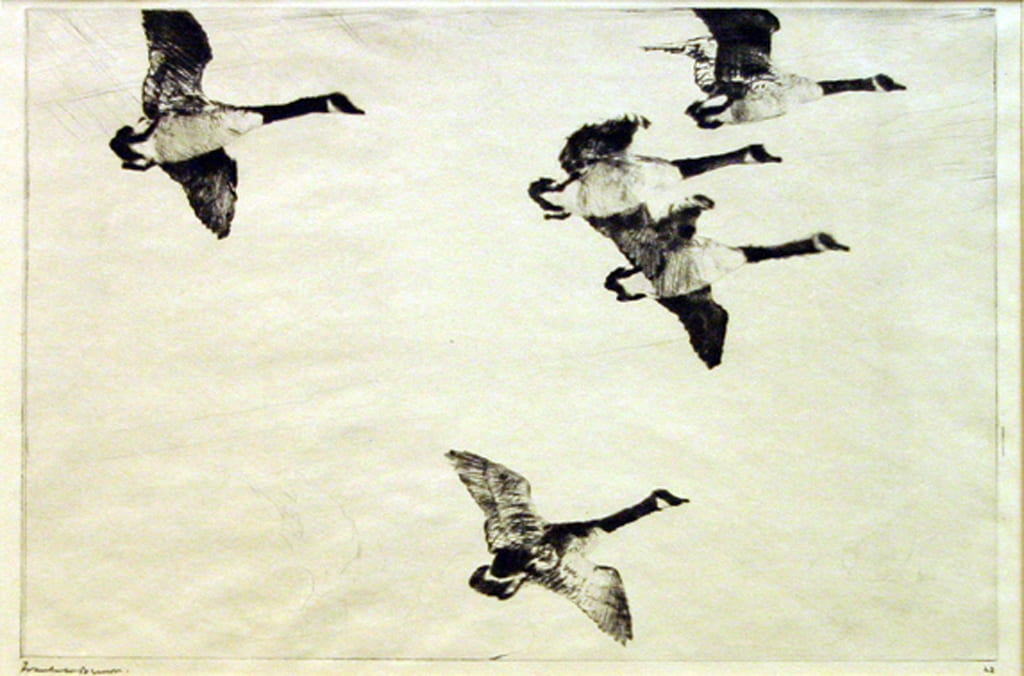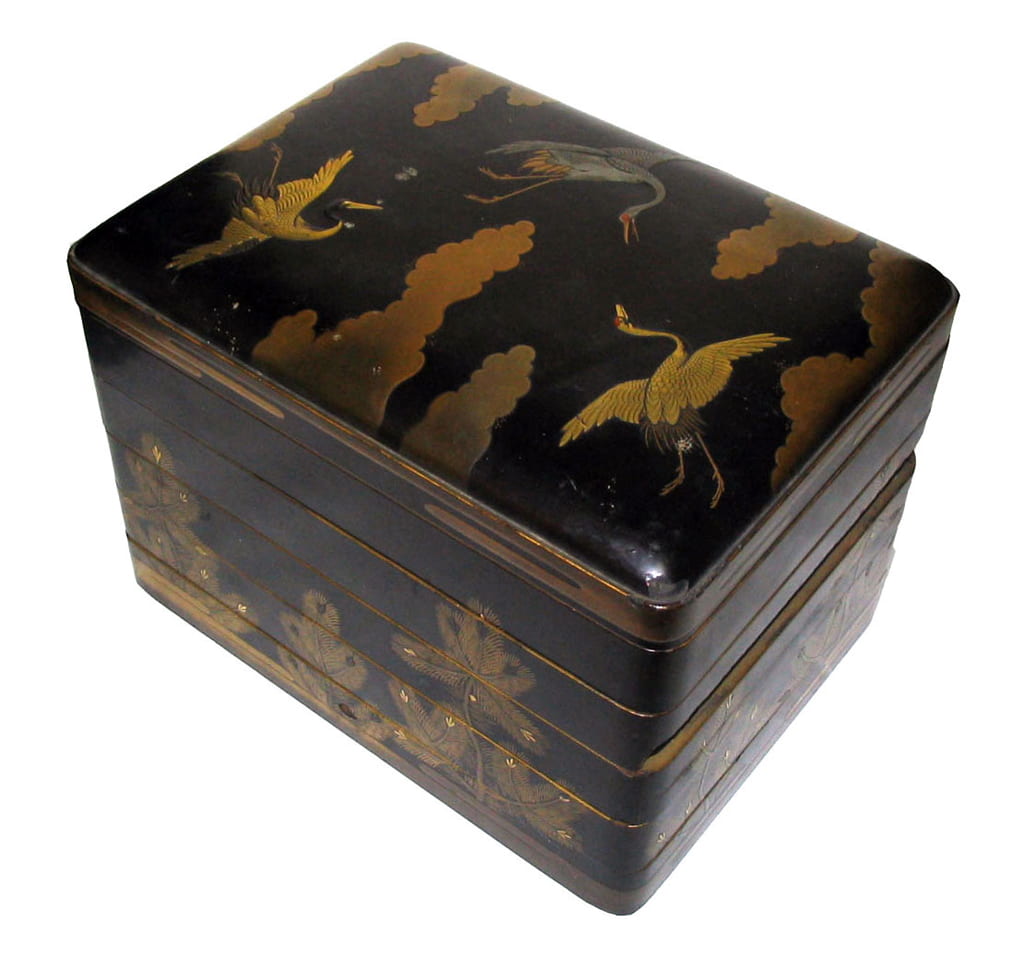The engraving Geese by Frank Weston Benson (1862–1951) is Japonesque in materials, composition, and subject matter. Benson printed the scene on “Shogun” paper produced by the Japan Paper Company of New York in imitation of traditional Japanese washi, praised for its strength, warm color, and softness. The picture’s unusual perspective, large areas of unmodulated tone, strong diagonal movement, and most noticeably its theme of waterfowl frozen in flight reflect the artist’s engagement with Japanese design. Benson collected Japanese wares for inspiration and use as props. He probably purchased them from the merchant Bunkio Matsuki, an immigrant from Shinano Province whose shops in Boston and Salem, Massachusetts, offered a variety of imported Japanese goods.[20] Benson was a long-time resident of both Boston and Salem, two intellectual and commercial centers of American Japanophilia.
This lacquer box from the Parsons collection features a pattern of flying cranes similar to the birds in Benson’s engraving Geese. The design on the box is gold and colored takamakie (gold decoration in relief) and kirigane (inlaid gold leaf) with nashiji (sprinkled flakes of gold) embellishing the edges of the clouds.
Frank Weston Benson, Geese, 1917; and Five-tier stacking box, n.d.
Image credits:
Frank Weston Benson (American, 1862–1951), Geese, 1917. Drypoint, 10 x 15 in. Mildred Lane Kemper Art Museum, Washington University in St. Louis. Gift of Dr. Malvern B. Clopton, 1930/1931.
Unknown (Japanese), Five-tier stacking box, n.d. Black and gold lacquer, 7 1/4 x 10 1/4 x 7 7/8 in. Mildred Lane Kemper Art Museum, Washington University in St. Louis. Bequest of Charles Parsons, 1905.

